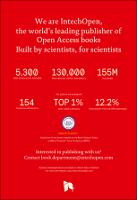Chapter Plasmonics Devoted to Photocatalytic Applications in Liquid, Gas, and Biological Environments
| dc.contributor.author | Hueso, Jose L. | |
| dc.contributor.author | Arca-Ramos, Adriana | |
| dc.contributor.author | Bueno-Alejo, Carlos J. | |
| dc.date.accessioned | 2021-06-02T10:09:57Z | |
| dc.date.available | 2021-06-02T10:09:57Z | |
| dc.date.issued | 2017 | |
| dc.identifier | ONIX_20210602_10.5772/intechopen.68812_340 | |
| dc.identifier.uri | https://library.oapen.org/handle/20.500.12657/49226 | |
| dc.description.abstract | Plasmonic nanomaterials have emerged in the last years as a very interesting option for many photocatalytic processes. Their localized surface plasmon resonance (LSPR) brings in some unique properties that overcome some of the drawbacks associated with traditional photocatalysis based on semiconductors. Even when in its infancy, many advances have been made in the field, mainly related to the synthesis of new structures with the capabilities of light absorption in the whole solar spectrum. A great number of reactions have been attempted using nanoplasmonic materials. In this chapter, we present the most recent advances made in the field of plasmonic photocatalysis comprising an introductory section to define the main types of plasmonic nanomaterials available, including the most recently labeled alternatives. Following with the major areas of catalytic application, a second section of the chapter has been devoted to liquid-phase reactions for the treatment of pollutants and a selection of organic reactions to render added-value to chemicals under mild conditions. The third part of the chapter addresses two specific applications of nanoplasmonic photocatalysts in gas-phase reactions involving the remediation of volatile organic compounds and the transformation of carbon dioxide into valuable energy-related chemicals. Finally, a fourth section of the chapter introduces the most recent applications of plasmonics in biochemical processes involving the regulation of cofactor molecules and their mimetic behavior as potential enzyme-like surrogates. | |
| dc.language | English | |
| dc.subject.classification | bic Book Industry Communication::P Mathematics & science::PH Physics::PHF Materials / States of matter::PHFC Condensed matter physics (liquid state & solid state physics) | |
| dc.subject.other | surface plasmon, photocatalysis, NIR, pollutants, energy, VOCs, CO2, semiconductor, mimetic enzymes | |
| dc.title | Chapter Plasmonics Devoted to Photocatalytic Applications in Liquid, Gas, and Biological Environments | |
| dc.type | chapter | |
| oapen.identifier.doi | 10.5772/intechopen.68812 | |
| oapen.relation.isPublishedBy | 09f6769d-48ed-467d-b150-4cf2680656a1 | |
| oapen.relation.isFundedBy | FP7-PEOPLE-2011-CIG | |
| oapen.grant.number | 294094 | |
| oapen.grant.number | 267626 | |
| oapen.grant.acronym | NANOLIGHT | |
| oapen.grant.acronym | HECTOR |

